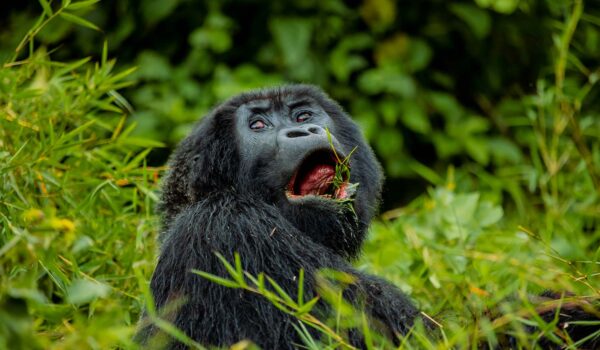Best time to Visit Kenya
Kenya is a year-round safari destination because of its varied landscapes, lively cultures, and amazing wildlife. The ideal time to go for a safari experience, however, the best time to visit, mostly depends on individual interests, especially with regard to animal observations, preferred weather, and certain seasonal occurrences like the Great Migration. With an emphasis on various seasons and elements that improve the safari experience, this article examines the best times to go to Kenya for a safari.
Season of Dryness (June to October)
Most people agree that the greatest time to go on safari in Kenya is during the dry season, which runs from June to October. The weather is more consistent and milder throughout these months, with little to no precipitation. Because there are fewer water sources during the dry season, animals are more likely to visit rivers, waterholes, and permanent lakes. It is simpler and more reliable to track the animals because of this regular assembly around the permanent water points in the park. Additionally, there is less foliage, making it easier to see animals.
The Great Migration, which occurs in the Maasai Mara from July to October, is a prominent feature of the dry season. Large herds of zebras and wildebeest migrate into Kenya around this time from Tanzania’s Serengeti in quest of better conditions. A famous sight is the passage of the Mara River, where animals risk waters teeming with crocodiles. Travelers looking for iconic, dramatic animal spectacles will find the Great Migration genuinely unique experience.
Comfortable, moderate temperatures, usually between 20°C and 28°C (68°F and 82°F) during the day and colder at night, are another feature of the dry season that attracts animals. Because of the lovely weather, travelers may explore comfortably throughout the dry season without having to deal with the difficulties of intense heat or rain.
November through December is the brief rainy season.
There are two distinct rainy seasons in Kenya, with the brief rainy season being between November and December. Even while some people may be reluctant to travel during the rainy season, the brief downpours are usually milder and less annoying. This time of year, is perfect for anyone who want less crowds and more lush scenery. Because rain showers are often short and fall in the late afternoon or evening, safari activities may continue for the most of the day. Although animals are more widely distributed as a result of the expansion of water sources, wildlife is still evident.
Birdwatching is also quite good during the brief wet season. Arriving from Europe and Asia, migratory birds contribute to Kenya’s already abundant birdlife variety. The display of vivid colors, rare species, and breeding-season bird behaviors will delight birdwatchers.
Additionally, November and December are often less expensive than the busiest months, which appeals to tourists on a tight budget. However, particularly in more isolated locations, travelers should be ready for sometimes muddy pathways.
March through May is the long rainy season.
March through May is the low season for Kenyan safaris because of the lengthy rains that occur during this time. Heavy rains during these months may make it difficult to travel on the roads, and some resorts may shut because they are inaccessible. There are special benefits to traveling to Kenya during the extended rainy season, despite the difficulties. The rich, colorful, and alive terrain provides breathtaking photo opportunity of blossoming plants and picturesque views.
Long rains also result in fewer visitors, making safari more private. There is still wildlife, and certain specimen with their young, which makes for unique and personal encounters. The environment also becomes a spectacular shade of green at this time, which contrasts sharply with the animal hues. In addition, lodging and safari packages are often less expensive during this period.
Nonetheless, it is critical that travelers plan ahead for this season by selecting lodging and safari companies that are weather-ready. In order to maximize a safari during the rainy season, it is essential to have native guides, robust vehicles, and waterproof equipment.
January through February is shoulder season.
The shoulder season, which runs from January to February, is another great time to go on safari in Kenya. Safari-goers who want to enjoy less crowded parks and warmer temperatures often choose this time of year since it represents a short dry spell in between the wet seasons. Since animals continue to go toward water sources, the often hot and dry weather makes game watching easier.
Since many animals give birth after the rains, January and February are also the best months to see baby wildlife. Young creatures attract predators, making for exciting observations for anybody curious in the animal kingdom’s cycle of life. Because of the often-great lighting and the golden background that the arid environment offers for animal photography, photographers also love this time of year.
Furthermore, this shoulder season is ideal for traveling to areas like the northern deserts of Samburu and Laikipia that might be difficult to reach during the rainy months. These areas are home to rare animals that are unfound elsewhere in the nation, such the reticulated giraffe and Grevy’s zebra.
The ideal time of year to go on safari in Kenya ultimately relies on personal goals and interest. While the wet seasons (November–December and March–May) provide more affordable alternatives, greener scenery, and less people, the dry season (June–October) provides the finest overall animal viewing, particularly during the Great Migration. January and February are shoulder seasons that provide a combination of great wildlife watching, less visitors, and the chance to see fresh bush life.
No matter the season, Kenya is a riveting location since each one offers its own beauty and distinctive experiences. You will find Kenya’s varied ecosystems and famous species memorable on every safari journey, regardless matter whether they are attracted to the drama of predator-prey relationships, the peace of the green seasons, or the spectacle of the Great Migration.

